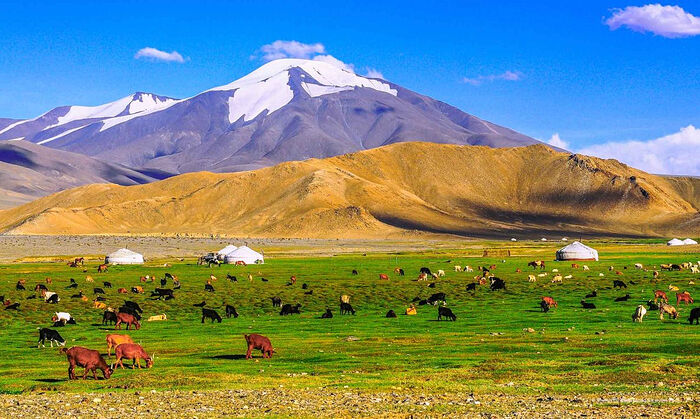 Photo: puteshestvyi.ru
Photo: puteshestvyi.ru
Religion in modern Mongolia
The majority of Mongolians are, deep in their hearts, very religious—although they try in every possible way to distance themselves from religion both at the official level and at home, “confessing” secularism, which is fashionable today. Surprisingly, in secular Mongolia it is the intriguing exoticism of  St. Nicholas of Japan on BuddhismOf the tens of thousands of Japanese converted to Orthodoxy thanks to his labors, a significant portion were former Buddhists, and amongst his assistants were former Buddhist monks (Bhikkhu), for example, Paul Savabe. The saint studied Buddhism during the first eight years of his time in Japan, when, in his words, he “strove with all diligence to study Japanese history, religion, and the spirit of the Japanese people.”
St. Nicholas of Japan on BuddhismOf the tens of thousands of Japanese converted to Orthodoxy thanks to his labors, a significant portion were former Buddhists, and amongst his assistants were former Buddhist monks (Bhikkhu), for example, Paul Savabe. The saint studied Buddhism during the first eight years of his time in Japan, when, in his words, he “strove with all diligence to study Japanese history, religion, and the spirit of the Japanese people.”
“>Buddhism and shamanism that attracts hundreds of thousands of tourists coming here from all over the world. And if religion attracts outside observers, it must play a certain role in the lives of the Mongolians. But what role?
Indeed, according to the 1992 Constitution, Mongolia is a secular country that guarantees its citizens the freedom of religion (Article 16, paragraph 15) and does not interfere in the activities of religious organizations established by the existing legislation. Religious institutions, in turn, must not interfere in the work of the State (Article 9). Religious discrimination is prohibited by Article 14, paragraph 2 of the Constitution.1
The freedom to practice religion, which appeared with the transition from the ideology of State atheism to building a democratic, liberal society, led to the following statistics: If in the mid-1980s, 80.4 percent of respondents identified themselves as atheists, in 1994 71.1 percent called themselves believers.2 In 2003, almost seventy-five percent of all Mongolians believed in God.3
By 2010, 61.4 percent of the country’s population over the age of fifteen were believers. Of them 86.5 percent were Buddhists—that is, fifty-three percent of the population in this age group. The remaining 38.6 percent identified themselves as “non-believers.”4
According to the last census conducted in the country in 2020, only 59.4 percent of Mongolians over the age of fifteen identified as religious believers, of them 87.1 percent identified as Buddhists.5
The Mongolian Law on the Relationship Between the State and Religious Institutions, adopted in 1993, regulates State control over the “predominant position of Buddhism”, which nevertheless is not recognized as a State religion. According to Article 4 of this Law, Mongolia “respects the dominant position of Buddhism in order to maintain the unity of the people and historical, cultural and civilizational traditions.”6 Interestingly, according to the results of ethnosociological surveys from different years, of and personal observations, a significant number of Mongolians (between forty percent and seventy-five percent) support this position of the State.7
Today it is almost impossible to say that Mongolia is a country of Buddhists, as it is often portrayed in the press and in the media. Striving for dialogue based on equality and parity with all countries and cultures of the world, the country’s Government, after moving away from the socialist model of development, is opening the doors to a variety of religious teachings. And in terms of religious policies the Mongolian leaders are willingly (or maybe willy-nilly) reaching the level of the Mongolian Empire of the thirteenth century, the images and symbols of which are actively used in national practices and rhetoric. The unique diversity of beliefs in the country, their peaceful coexistence with each other and with traditional religions (Buddhism, shamanism and Islam), coupled with unique local cults (for example, the veneration of sacred mountain peaks8), which continue to play an important role in the life of society, are a distinctive feature of modern Mongolia—something not every country can boast.
There is no doubt that a soul sincerely striving for the Truth and at the same time wandering through the “labyrinths” of various religions and beliefs is sure to find a path to the Light. This accounts for the slow yet steady awakening of interest and love in Mongolia for Orthodoxy, the history of which officially began in Mongolia 160 years ago, although its roots go deep into the imperial past of the “land of the eternally blue sky”.
A trip into the past
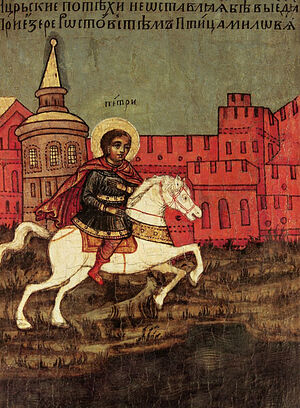 Tsarevich Peter hunting in the vicinity of Rostov. Scene from the icon, “St. Peter, Tsarevich of the Horde” The first Orthodox Mongolians appeared in the Mongol Empire under Genghis Khan and the first Genghisid rulers, the great Khan’s successors. It is widely known that the Mongol khans provided special protection to the Orthodox Church in Russia. It led to the establishment in 1261 in the capital of the Golden Horde by Metropolitan Cyril II of Kiev and All Russia (+1280) of the Diocese of Sarai to pastor the Orthodox faithful living in the Horde. Initially, the heads of the diocese performed two functions: liturgical and diplomatic (“representing the political interests of the Byzantine Empire at the court of the Horde Khans.”9
Tsarevich Peter hunting in the vicinity of Rostov. Scene from the icon, “St. Peter, Tsarevich of the Horde” The first Orthodox Mongolians appeared in the Mongol Empire under Genghis Khan and the first Genghisid rulers, the great Khan’s successors. It is widely known that the Mongol khans provided special protection to the Orthodox Church in Russia. It led to the establishment in 1261 in the capital of the Golden Horde by Metropolitan Cyril II of Kiev and All Russia (+1280) of the Diocese of Sarai to pastor the Orthodox faithful living in the Horde. Initially, the heads of the diocese performed two functions: liturgical and diplomatic (“representing the political interests of the Byzantine Empire at the court of the Horde Khans.”9
Among the medieval accounts related to Orthodoxy in Mongolia the conversion to Orthodoxy of Tsarevich Dair Kaidagul of the Horde, nephew of Khan Berke (who ruled the Golden Horde from 1257 to 1266) and great-grandson of Genghis Khan, stands out. Tsarevich Dair became interested in Orthodoxy during a visit to Sarai by St. Cyril, Bishop of Rostov and Yaroslavl (+1262), who preached in the Horde’s capital in 1253. Dair persuaded St. Cyril, who returned to the Horde a few years later, to take him to Rostov. Here he was baptized with the name  St. Peter, Tsarevich of the Horde (1290)One day, after the holy hierarch Kirill had reposed, Peter fell asleep on the shore of the lake after a hunt. He had an amazing dream: two men shining with an unearthly light woke him and said, “Peter, your prayer has been heard, and your almsgiving has risen to God.”
St. Peter, Tsarevich of the Horde (1290)One day, after the holy hierarch Kirill had reposed, Peter fell asleep on the shore of the lake after a hunt. He had an amazing dream: two men shining with an unearthly light woke him and said, “Peter, your prayer has been heard, and your almsgiving has risen to God.”
“>Peter, and according to his Life, after an appearance of the holy Apostles Peter and Paul he built a monastery on Lake Nero in their honor. After his wife’s death, he took monastic vows and died in 1290 at the monastery he had founded. He was canonized as the Venerable Peter in 1547 under the Holy Hierarch Macarius (c. 1482–1563), Metropolitan of Moscow and All Russia.
Despite the skeptical opinion in historiography that St. Peter of the Horde allegedly had to be baptized after fleeing to Russia in order not to be murdered during dynastic strife, his conversion to Orthodoxy stands apart in a series of conversions to Orthodoxy by the Horde nobility, which took place in the second half of the thirteenth and the early fourteenth centuries. Secular historians agree with this, noting that only St. Peter was baptized solely as a result of preaching (in this case, St. Cyril’s preaching) and was not guided by political, dynastic or other secular circumstances.10
Other major historical figures of medieval Russia partly associated with Mongolia were the holy 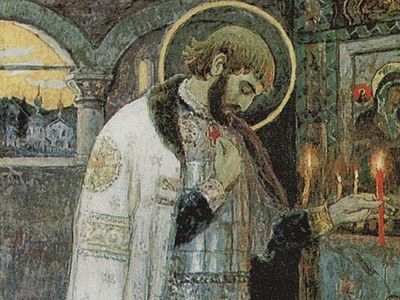 St. Alexander Nevsky: The Victory of Christ or a “Balance of Power”The peace that faith brings into our lives is impossible to understand for someone who does not seek Christ. This peace is very far from any idea of an outwardly tranquil course of life and the comfort of a fickle reality that people far from the faith usually imagine when they think of peace.
St. Alexander Nevsky: The Victory of Christ or a “Balance of Power”The peace that faith brings into our lives is impossible to understand for someone who does not seek Christ. This peace is very far from any idea of an outwardly tranquil course of life and the comfort of a fickle reality that people far from the faith usually imagine when they think of peace.
“>Right-Believing Prince Alexander Nevsky (1221–1263), whose active interaction with the Horde is widely known, and the  St. Alexis the Metropolitan of Moscow and Wonderworker of All RussiaThe Lord revealed to the future saint his lofty destiny from early childhood. At twelve years of age Eleutherius went to a field and set nets to ensnare birds. He dozed off and suddenly he heard a voice: “Alexis! Why do you toil in vain? You are to be a catcher of people.””>Holy Hierarch Alexei (c. 1292/1305–1378), Metropolitan of Kiev and All Russia, who cured Taydula, the wife of Khan Uzbek of the Horde, of an eye disease.
St. Alexis the Metropolitan of Moscow and Wonderworker of All RussiaThe Lord revealed to the future saint his lofty destiny from early childhood. At twelve years of age Eleutherius went to a field and set nets to ensnare birds. He dozed off and suddenly he heard a voice: “Alexis! Why do you toil in vain? You are to be a catcher of people.””>Holy Hierarch Alexei (c. 1292/1305–1378), Metropolitan of Kiev and All Russia, who cured Taydula, the wife of Khan Uzbek of the Horde, of an eye disease.
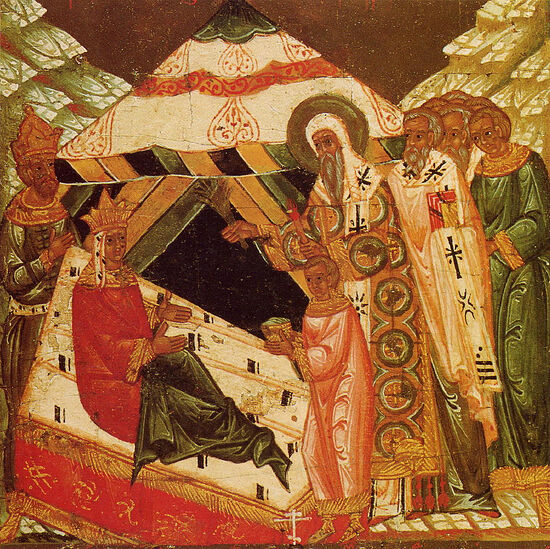 Metropolitan Alexei heals Taydula Khatun, the wife of the Khan of the Golden Horde
Metropolitan Alexei heals Taydula Khatun, the wife of the Khan of the Golden Horde
The substantive appearance of Orthodoxy in Mongolia dates back to the nineteenth century, when it was the State religion in the Russian Empire and had certain ideological functions. For this reason Orthodox clergymen often followed diplomats to the countries (new and hitherto unknown territories) with which diplomatic ties were being established. This happened in the Qing Empire, which included what is now Mongolia’s vast expanses. The signing of the Treaties of Tianjin (1858) and, to a greater extent, of Beijing (1860) not only lifted restrictions on Russo-Mongolian trade, but also became the prologue11 to the opening in 1861 of the first Russian consulate in Urga (now Ulaanbaatar) on the territory of Mongolia, and after it to the construction of the first Orthodox Church in honor of the Holy Trinity. According to A.A. Sizova, a specialist in the history of Russia’s consular service in Mongolia, it was “one of the consulate’s first cultural initiatives.”12 Funds for the church were collected beginning from 1863. The initiator of the fundraising campaign and the idea of building the church was Consul Ya.P. Shishmarev (1833–1915), who served in Mongolia from 1864 for almost half a century. The Orthodox church was built between 1872 and 1875 and consecrated on August 30, 1894.
Prior to the construction of the Orthodox church, services had been celebrated in the consulate building, where the first Divine Liturgy was celebrated on March 22/April 3, 1864.13 The service was performed by Priest (from 1876 archpriest) John Nikolsky (1831–1893)—at that time the head of the Verkhneudinsk Deanery, cleric of the Cathedral in honor of the Hodegetria Icon in the city of Verkhneudinsk (now the city of Ulan-Ude—the administrative center of the Buryat Republic, Russia). Having celebrated several services, including the Paschal Liturgy, Fr. John left Urga on April 26/May 8, 1864. Later, from 1866 to 1892, he was the rector of the Holy Resurrection Church in the city of Kyakhta (in the Buryat Republic close to the Mongolian border).
After Fr. John Nikolsky, at the request of the Beijing Ecclesiastical Mission (hereinafter: the BEM) to the Most Holy Governing Synod Hieromonk Sergei (Artamonov) was sent in 1865 to Urga on a one-year mission. Even before the end of his mission term Fr. Sergei reported to the head of the BEM in Beijing about his desire to serve in Urga for the rest of his life. But after a while, for personal reasons, he was transferred to the Holy Transfiguration Monastery at the embassy and joined its brotherhood.14
The next priest who was sent on a mission was Hieromonk Gerontius (Levitsky), a member of the BEM, who served in Urga from 1866 to 1868. For a short time (from October 1872 until his death on December 27 of the same year), Hieromonk Cornelius (Palikin), a BEM member, served in Urga. He was buried at the Russian cemetery in Urga.15
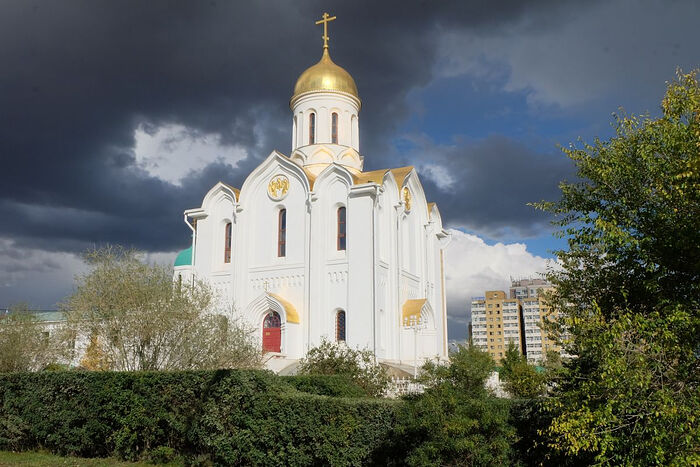 Holy Trinity Church in Ulaanbaatar
Holy Trinity Church in Ulaanbaatar
A permanent priest in Urga was appointed by decree of the bishop of Irkutsk in May 1893. The first rector of the Holy Trinity Church in Urga was Priest Nikolai Shastin (1862–?), a missionary from Tsakir stanitsa (village) of the Transbaikal Ecclesiastical Mission (today the territory of the Zakamensk district of the Buryat Republic). He served in Urga until 1895. It was he who consecrated the consulate church. The newly appointed rector arrived in Mongolia together with Reader Joseph Kornakov, who graduated from the Irkutsk Theological Seminary. In November 1895, Fr. Nikolai, who was very fluent in Chinese, was appointed BEM member and assigned to St. Alexander Nevsky Church in Hankou (now part of Wuhan, Hubei Province, China), from where about a year later he was sent to Beijing, after which he served for several years in Qiqihar. Later he resigned from the priesthood and returned to Hankou with a new family after the Revolution of 1917 “as an émigré and a refugee.”16 Thus, despite some allegations,17 information about Fr. Nikolai’s life can be traced after 1897 right until the dissolution of the Russian Empire; his further destiny is unknown.
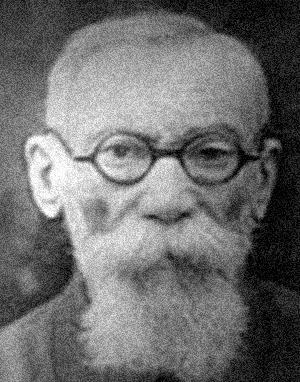 The physician Pavel Nikolaevich Shastin It should be said that in literature in connection with the biography of the Russian and Soviet doctor Pavel Nikolaevich Shastin (1872–1953), who is famous in Mongolia, two different priests are often mixed up: namely Fr. Nikolai Pavlovich Shastin, rector of the Urga church, and Nikolai Iakinfovich Shastin (1851–1909), who served in Irkutsk churches. The latter was the father of P.N. Shastin, the father of modern medicine in Mongolia, and accordingly, the grandfather of the famous Mongolist Nina Pavlovna Shastina (1898–1980).18
The physician Pavel Nikolaevich Shastin It should be said that in literature in connection with the biography of the Russian and Soviet doctor Pavel Nikolaevich Shastin (1872–1953), who is famous in Mongolia, two different priests are often mixed up: namely Fr. Nikolai Pavlovich Shastin, rector of the Urga church, and Nikolai Iakinfovich Shastin (1851–1909), who served in Irkutsk churches. The latter was the father of P.N. Shastin, the father of modern medicine in Mongolia, and accordingly, the grandfather of the famous Mongolist Nina Pavlovna Shastina (1898–1980).18
In the spring of 1895, Priest Alexei Ushmarsky (?), a missionary of Ust-Kiran stanitsa (village), which is now in the Kyakhta district of the Buryat Republic, celebrated the services according to the Typikon of Holy Week, Pascha and Bright Week in Urga.19 Between 1897 and 1899 Priest Vsevolod Ivanov, an alumnus of St. Petersburg Theological Academy, was rector of the Holy Trinity Church.
From 1901 to 1913 the rector of the Orthodox church in Urga was Archpriest Mily Chefranov (1855-no earlier than 1913). During his relatively long ministry in Urga, Fr. Mily studied the history of Orthodoxy in Mongolia and showed great zeal in the mission, leaving a vivid description of his activities.20
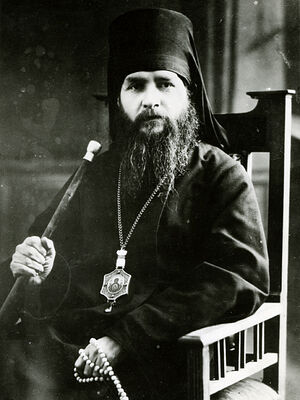 New Hieromartyr Amphilochius (Skvortsov) From 1912 to 1914 Hieromonk Amphilochius (Skvortsov), a private associate professor at the Kazan Theological Academy, stayed on a mission in Mongolia to study the Tibetan language, Tibetan literature and Buddhism.21 Between 1925 and 1926 he served as Bishop of Krasnoyarsk and Yeniseisk; from 1928—Bishop of of Melekess, Vicar of the Samara Diocese; he was executed by a firing squad in 1937; in 2000 he was canonized and ranked among the holy New Martyrs and confessors of Russia for churchwide veneration.
New Hieromartyr Amphilochius (Skvortsov) From 1912 to 1914 Hieromonk Amphilochius (Skvortsov), a private associate professor at the Kazan Theological Academy, stayed on a mission in Mongolia to study the Tibetan language, Tibetan literature and Buddhism.21 Between 1925 and 1926 he served as Bishop of Krasnoyarsk and Yeniseisk; from 1928—Bishop of of Melekess, Vicar of the Samara Diocese; he was executed by a firing squad in 1937; in 2000 he was canonized and ranked among the holy New Martyrs and confessors of Russia for churchwide veneration.
The last rector of the consulate church (1914-1921) in Urga was Priest Fyodor Parnyakov (1870–1921), a cleric of the Irkutsk Diocese, sent to Mongolia at his own request.22 By that time, Fr. Fyodor had proved himself an active organizer of parish schools, and since 1913 he had been a member of the East Siberian Branch of the Russian Geographical Society. Curiously enough, he married Maria Reshikova, the daughter of Priest M. Reshikov (Reshchikov?) from the village of Kudara (now in the Kabansk district of the Buryat Republic) on September 20, 1891, near Mongolia–at the Church of the Tikhvin Icon of the village of Ust-Kyakhta.23
In addition to celebrating services and pastoring Orthodox people in Mongolia, Fr. Fyodor took an energetic part in extra-liturgical work, setting up a parish trust under the auspices of Consul General A.J. Miller. In addition to specific parish affairs, the area of responsibility of the trust included the organization of schools and a commercial college (opened in 1916), libraries, educational lectures, concerts (a string orchestra of twenty to twenty-two instruments was organized), and the decision to construct a new church. Fr. Fyodor was also an editor of a Mongolian newspaper called The Urga Consumer Society,24 and between 1914 and 1917 he made several trips around the country, becoming the first Orthodox priests to visit remote Russian colonies from Urga up to Uliastay, Hovd and Ulaangom.
In addition to the church in Urga, thanks to the zeal of Russian diplomats, chapels were built in the frontier town of Maimachen (now Altanbulag of the Selenga aimag/district) and in Uliastai. The construction of a church was planned in Uliastai, and fundraising began in 1916 (the Revolution prevented the implementation of this project). A prayer room was also equipped in a Russian population center in the center of Urga two and a half miles west of the consulate church. According to some information, the missionary camp was set up on Lake Khövsgöl, most likely in the north, since the camp had connections with the Nilova Pustyn health resort, located in the Tunka Valley (today the village of Nilovka in the Tunka district of the Buryat Republic—famous for its hydrotherapy—which bears the name of a monastery that once existed here).25
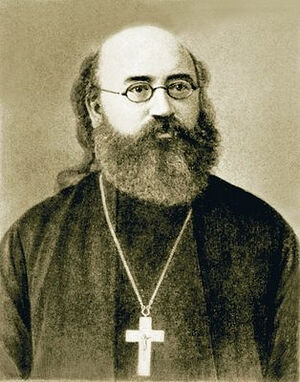 Archpriest John Vostorgov, a Synodal missionary In July 1916,26 in order to examine the prospects for missionary work and to promote sobriety, the Synodal missionary Archpriest John Vostorgov and the head of the Transbaikal Ecclesiastical Mission Archimandrite Ephraim (Kuznetsov; from November 1916—Bishop of Selenga, Vicar of the Transbaikal Diocese) visited Mongolia. There is evidence that the two clergymen had first met in Mongolia during their first trip in the summer of 1913, when the conditions for the “hoped for opening of an Orthodox mission” were being considered.27 The plans were not destined to be fulfilled because of the catastrophic changes in the country. On September 5, 1918, Bishop Ephraim and Archpriest John were executed by a firing squad in Moscow, and in 2000 both were canonized as holy New Martyrs of Russia.
Archpriest John Vostorgov, a Synodal missionary In July 1916,26 in order to examine the prospects for missionary work and to promote sobriety, the Synodal missionary Archpriest John Vostorgov and the head of the Transbaikal Ecclesiastical Mission Archimandrite Ephraim (Kuznetsov; from November 1916—Bishop of Selenga, Vicar of the Transbaikal Diocese) visited Mongolia. There is evidence that the two clergymen had first met in Mongolia during their first trip in the summer of 1913, when the conditions for the “hoped for opening of an Orthodox mission” were being considered.27 The plans were not destined to be fulfilled because of the catastrophic changes in the country. On September 5, 1918, Bishop Ephraim and Archpriest John were executed by a firing squad in Moscow, and in 2000 both were canonized as holy New Martyrs of Russia.
Fr. Fyodor Parnyakov, too, suffered a martyr’s death. After being imprisoned and tortured, he was hacked to death with a saber in February 1921. The body of the murdered priest was thrown onto the bank of the Tuul Gol River.
The last recorded priest who served in Urga was Nikolai Fedotov (1879–?), who graduated from the Orenburg Theological Seminary. During the Civil War in the summer of 1918 he left his homeland and by the autumn of 1920, through the Kazakh steppes, he had reached the large Russian trading post of Tzain-Shabi (now Tsetserleg of the Arhangay aimag/district). There was a branch of the Mongolian National Bank, a post office, and a telegraph office in Zain-Shabi. Most likely, after the destruction of the trading post by the troops of Baron Roman von Ungern In early 1921,28 Fr. Nikolai together with Ungern’s army moved to Urga, where he began to serve at the consulate church until May 1923, when the church and all church property were expropriated by the State, after which he served in a private house. N.M. Fedotov wrote that he had been “sent to Urga to serve as a parish priest.”29 Given the difficult situation during the bloody Civil War in Mongolia and the atmosphere that prevailed around Baron Ungern, it is hard to believe the words that he had been “sent” there.
Judging by his reports in 1924 to the Renovationist structures of the “Living Churches” in Buryatia, including on the celebration of the Church feasts according to the new calendar, it can be concluded that Nikolai Fedotov was not a priest of the Russian Orthodox Church but was in a schismatic organization, or presumably, had no opportunity to contact the official Church during the hard times. Most likely, Baron Ungern (under whom Fr. Fyodor Parnyakov was executed and relative patronage was given to Nikolai Fedotov) did not get to the root of the Renovationist schism.30
There are two main opinions as to how and when organized Orthodox Church life stopped in Mongolia. According to the first version, it was after the martyrdom of Archpriest Fyodor Parnyakov in 1921.
Priest Nikolai Kornienko, a modern expert on the history of Orthodoxy in Mongolia, puts forward another point of view, according to which “at least until 1928 there was an Orthodox priest in Urga.”31 His version is based on one of the last Baptisms in Ulaanbaatar performed over Nikolai Alexandrovich Brilyov, who was born in the year specified. Although, according to Fr. Nikolai, “there is no information about the assignment of other clergy to serve in Mongolia in subsequent times”32—that is, based on the context of the events described, after 1924.
In any case, the end of the revolutionary bloodshed in the Mongolian steppes and the proclamation of the Mongolian People’s Republic on November 26, 1924, sidelined Orthodoxy and other religions from public life into the sphere of family rituals of the country’s populace.
So, after some episodes of the Mongolians’ acquaintance with Orthodoxy (mainly the Thirteenth and the fourteenth centuries), the reemergence and spread of Orthodoxy in Mongolia began in 1864, when the first Divine Liturgy was celebrated in the consulate church of the Holy Trinity. Subsequently, services were celebrated by priests from the BEM who were temporarily sent on a mission there. The first permanent rector in Urga appeared in 1893—it was Priest Nikolai Shastin, who served in Mongolia for two years.
After the last rector of the church in Urga, Fr. Fyodor Parnyakov, was martyred and Priest Nikolai Fedotov, who was probably not in communion with the Russian Orthodox Church of the Moscow Patriarchate, gradually gave up liturgical activity, Orthodox life in Mongolia died out until the 1990s.
To be continued…
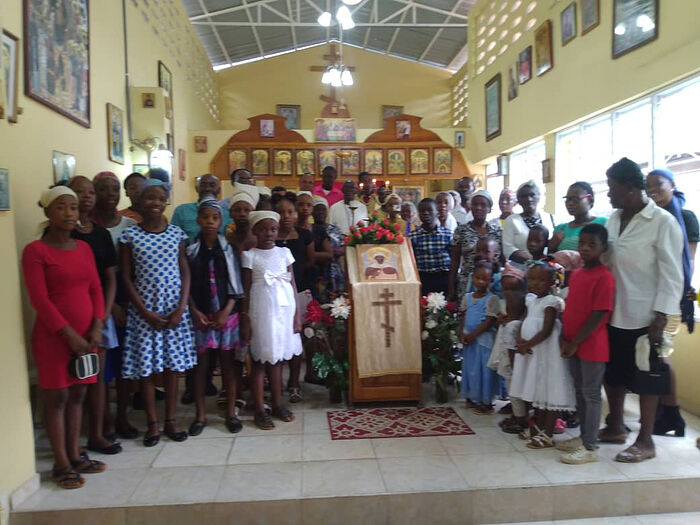
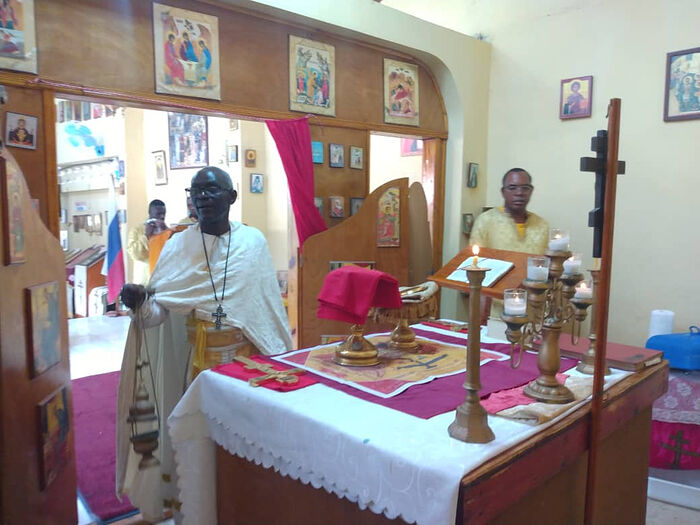
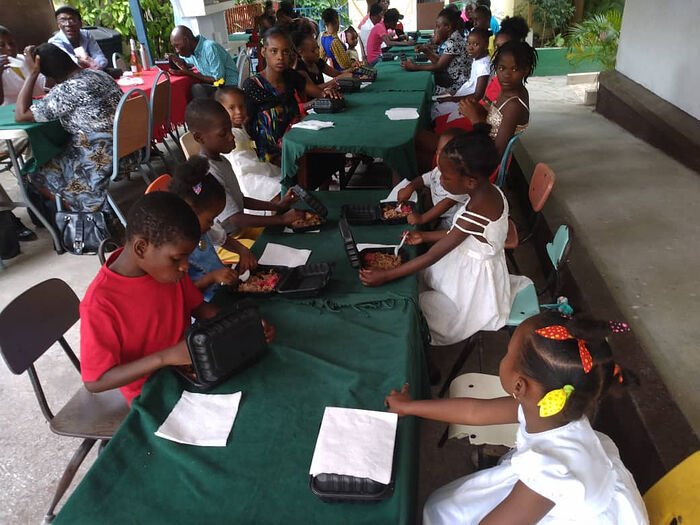
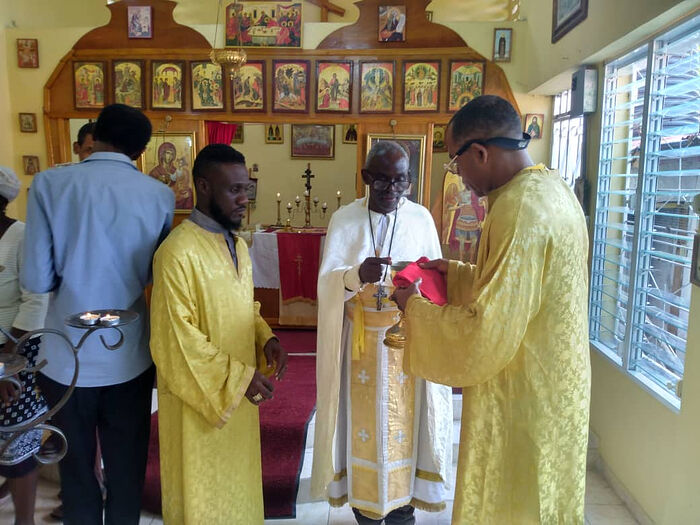
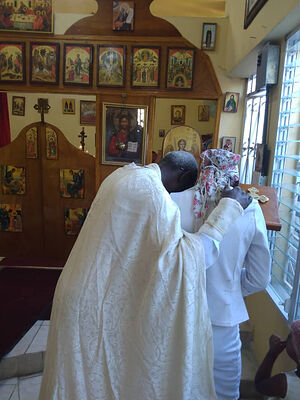

 St. Nicholas of Japan on BuddhismOf the tens of thousands of Japanese converted to Orthodoxy thanks to his labors, a significant portion were former Buddhists, and amongst his assistants were former Buddhist monks (Bhikkhu), for example, Paul Savabe. The saint studied Buddhism during the first eight years of his time in Japan, when, in his words, he “strove with all diligence to study Japanese history, religion, and the spirit of the Japanese people.”
St. Nicholas of Japan on BuddhismOf the tens of thousands of Japanese converted to Orthodoxy thanks to his labors, a significant portion were former Buddhists, and amongst his assistants were former Buddhist monks (Bhikkhu), for example, Paul Savabe. The saint studied Buddhism during the first eight years of his time in Japan, when, in his words, he “strove with all diligence to study Japanese history, religion, and the spirit of the Japanese people.”
 St. Peter, Tsarevich of the Horde (1290)One day, after the holy hierarch Kirill had reposed, Peter fell asleep on the shore of the lake after a hunt. He had an amazing dream: two men shining with an unearthly light woke him and said, “Peter, your prayer has been heard, and your almsgiving has risen to God.”
St. Peter, Tsarevich of the Horde (1290)One day, after the holy hierarch Kirill had reposed, Peter fell asleep on the shore of the lake after a hunt. He had an amazing dream: two men shining with an unearthly light woke him and said, “Peter, your prayer has been heard, and your almsgiving has risen to God.” St. Alexander Nevsky: The Victory of Christ or a “Balance of Power”The peace that faith brings into our lives is impossible to understand for someone who does not seek Christ. This peace is very far from any idea of an outwardly tranquil course of life and the comfort of a fickle reality that people far from the faith usually imagine when they think of peace.
St. Alexander Nevsky: The Victory of Christ or a “Balance of Power”The peace that faith brings into our lives is impossible to understand for someone who does not seek Christ. This peace is very far from any idea of an outwardly tranquil course of life and the comfort of a fickle reality that people far from the faith usually imagine when they think of peace.




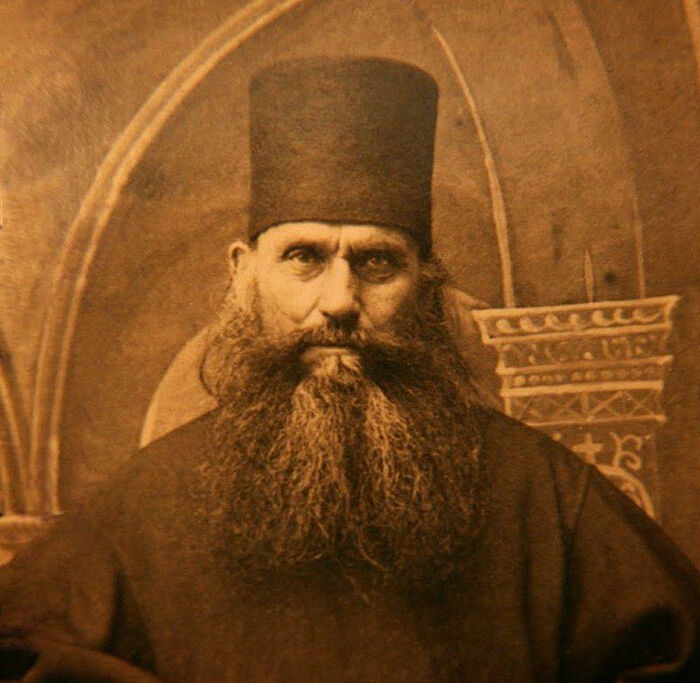
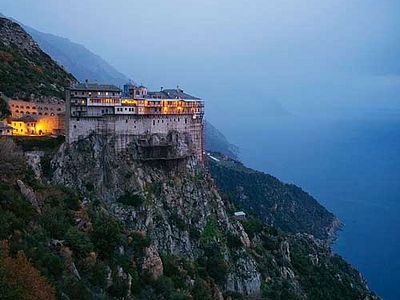 The Prophetic Role of Mount Athos in the Contemporary WorldMount Athos has long been a fascinating place, which attracts the attention not only of Orthodox, but people belonging to other religions and even of non-believers.
The Prophetic Role of Mount Athos in the Contemporary WorldMount Athos has long been a fascinating place, which attracts the attention not only of Orthodox, but people belonging to other religions and even of non-believers. St. Silouan the Athonite: Holy Russian Hero“I read St. Symeon the New Theologian and my soul grieves over how far I am from a real Christian life. When I read Elder Silouan, then my soul is comforted in the Lord and rejoices in Him Who loves me, a sinner.”
St. Silouan the Athonite: Holy Russian Hero“I read St. Symeon the New Theologian and my soul grieves over how far I am from a real Christian life. When I read Elder Silouan, then my soul is comforted in the Lord and rejoices in Him Who loves me, a sinner.” St. Sophrony: Spiritual ExcerptsMay God give you all the spirit of repentance. Weep over your faults; weep, that your heart may not dry up.”>Archimandrite Sophrony. When I read it the first time many years ago, I had no idea that one day I would be visiting his very chapel! And now I am going to visit the place of his numerous spiritual battles. Oh, how merciful is our Most Holy Virgin and Theotokos!
St. Sophrony: Spiritual ExcerptsMay God give you all the spirit of repentance. Weep over your faults; weep, that your heart may not dry up.”>Archimandrite Sophrony. When I read it the first time many years ago, I had no idea that one day I would be visiting his very chapel! And now I am going to visit the place of his numerous spiritual battles. Oh, how merciful is our Most Holy Virgin and Theotokos! 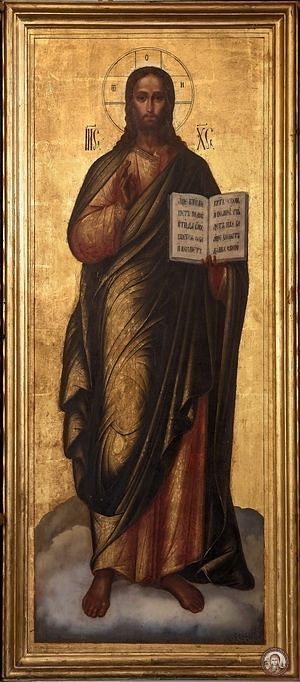
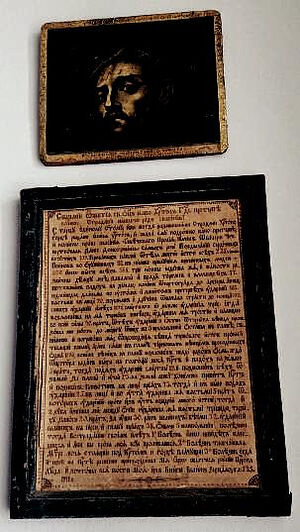
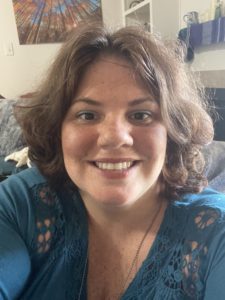

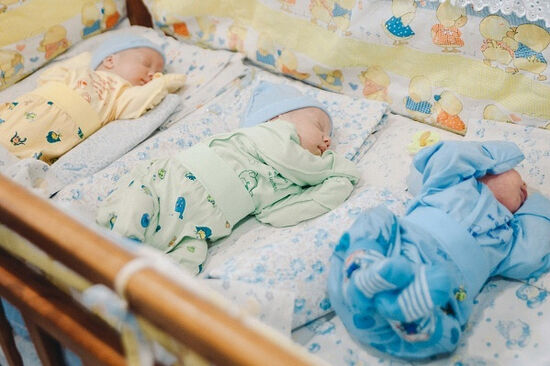
 Pre-revolutionary abbess’ pectoral cross returned to Russian monasteryThe cross bears the inscription: “To the venerable Mother Abbess Anastasia from the grateful nuns and sisters of the Hodigitria Monastery. 1916.”
Pre-revolutionary abbess’ pectoral cross returned to Russian monasteryThe cross bears the inscription: “To the venerable Mother Abbess Anastasia from the grateful nuns and sisters of the Hodigitria Monastery. 1916.”